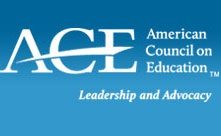
September 5, 2014; Boston Globe
Federal legislation that would facilitate equal access to digital academic materials for college students with disabilities, an existing requirement under federal law, is floating through Congress with uncommon bipartisan support. The TEACH Act (standing for “Technology Equality and Accessibility in College and Higher Education”) establishes voluntary, market-driven protocols for colleges and universities to meet their obligation to level the academic playing field for all their students, a legal scheme that would significantly reduce compliance costs and institutional exposure to private lawsuits and enforcement actions by the Department of Education’s Office of Civil Rights.
Sign up for our free newsletters
Subscribe to NPQ's newsletters to have our top stories delivered directly to your inbox.
By signing up, you agree to our privacy policy and terms of use, and to receive messages from NPQ and our partners.
Accessibility advocate Kyle Shachmut, president of the National Federation of the Blind of Massachusetts, characterizes TEACH as a prudent piece of legislation for all interested parties, writing that, “With students wanting equal access, schools wanting to avoid litigation, and manufacturers wanting to grow market-based solutions, the TEACH Act is a win-win-win.”
Yet without obvious justification, college lobbying organizations, led by the American Council on Education (ACE), the foremost advocacy group for higher education, object to several key provisions of the TEACH Act. So what is ACE’s beef with beefing up practical access to digital materials for students with disabilities, a growing segment of the overall student population (the growth of their academic participation in large part fueled by increased access prodded by disability rights laws effecting higher education)? In an open letter to Senator Tom Harkin, Chairman of the Committee on Health, Education, Labor and Pensions, the undersigned stated in the most general, unsupported terms possible that Section 931 (“Accessible Instructional Materials”) would exacerbate the problem it seeks to mitigate, creating an “impossible to meet standard” and an unspecified “chilling effect” on the adoption of new technologies, supposedly “harming the very students it is intended to assist.”
Perhaps ACE is banking on the continued futility of legal enforcement efforts against individual colleges, which present a low financial and public relations risk to the vast majority of America’s thousands of institutions of higher education. Perhaps its leaders are concerned about increased costs in other areas with increased enrollment of students with disabilities, including the perceived costs to make campuses accessible physically (creating more accessible movement and removing architectural barriers, for instance). Increasing accessibility for persons with disabilities, however, creates a more free-flowing and convenient campus for all (as embodied in the concept of “universal design”) and enhances learning through a more diverse student body and roster of teachers. That could be a potentially important outcome of the TEACH Act, which ACE should see as a legitimate topic for dialogue and pursuit.—Louis Altman











